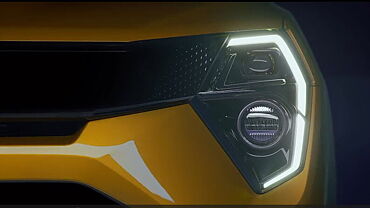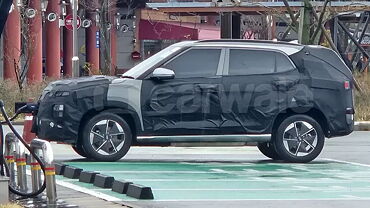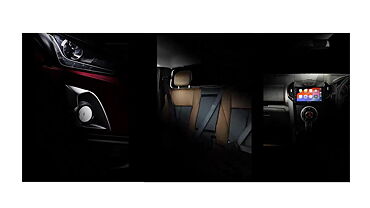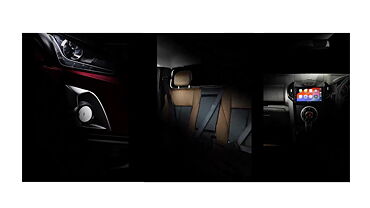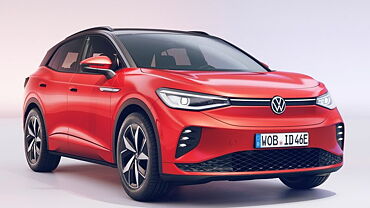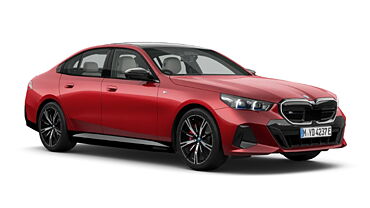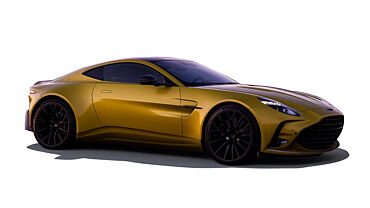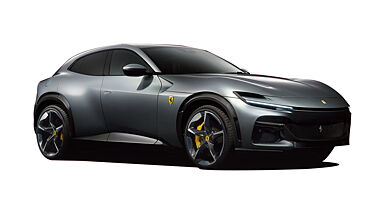The Jaguar C-X16 concept epitomises Jaguar’s technological advancements and futuristic designs. The model has taken Jaguar’s traditional rear-wheel drive formula and front-engined engineering and has upgraded them for the 21st century. It has been developed on the theme of One plus One that gives a new direction for the alternatives of performance hybrid models for the future. The seductive and sensual look of the car reflects the new design theme being pursued by Jaguar for its sportscars.
Adrian Hallmark, Global Brand Director, Jaguar, said, “The C-X16 is our compelling vision for a 21st century Jaguar sports car. It embodies the established Jaguar strengths of sensual design, animal-like agility and inspirational performance and combines these with attributes that set us on a course to create sustainable sports cars of the future.”
The noteworthy aesthetic features and technical specifications of the new Jaguar C-X16 concept model are as follows:
- All-alloy 3.0-litre V6 engine produces 374 hp power and torque of 450 Nm.
- High performing hybrid drivetrain having 50:50 weight distribution
- Additional electric motor producing 93 hp power and torque of 235 Nm.
- Eight-speed gearbox takes makes use of Quickshift changes to offer great handling and control.
- The hybrid takes into the account the key aspects included in Limo-Green research project and shares its platform with C-X75 supercar concept.
- Multimodal rotary controls based on the future technology.
- Miniature OLED screens to bridge the gap between sports car and daily use car.
- Cabin designed with Suedecloth and finest leather.
- Main touch surfaces consist of rich piano blacks, carbon-fibre, dark chrome and anodised aluminium.
- Futuristic touch screen that comprise short cut keys to make its use more convenient.
- Manually-adjustable bucket seats made of lightweight composite material.
REDEFINING PERFORMANCE
Commenting on the Jaguar C-X16, Hallmark stated, “C-X16 draws inspiration from both our sporting qualities and our current leading-edge research into future powertrain technologies and consequently delivers an irresistible proposition on both emotional and rational levels.”
The Jaguar C-X75 supercar concept that came in the year 2010 became a phenomenon in performance car category due to its range-extending hybrid powertrain. Similarly, the Jaguar C-X16 reflects the company’s endeavours to develop sustainable powertrain technologies and make them feasible for manufacturing.
The company’s Advanced Aluminium Architecture programme is bent upon sustainability, agility and power-to-weight benefits which defines the performance of Jaguar cars. The company had undertaken the Limo-Green project in collaboration with the Technology Strategy Board in order to focus on combining this unique aluminium architecture with an experimental hybrid powertrain that was first seen in the C-X75 supercar concept. Real-world hybrid technologies have been adopted in the Jaguar C-X16 concept, which emphasise upon improving car’s environmental credentials and driving experience.
HYBRID TRANSMISSION
The Jaguar C-X16 indicates the company’s aim of producing sports cars that do not take a toll on the environment. In this regard, the concept model has been equipped with a hybrid powertrain that includes an all-alloy V6 engine. This powerful engine is mated with an electric motor that enhances performance of the car, an idea that takes its roots from the Formula One KERS system.
The hybrid-performance system has three functions namely, curtailing the fuel consumption, enhancing the V6 engine’s power by on-demand ‘Push to Pass’ system and curbing the tailpipe-emissions considerably. The also enables the car to accelerate to a speed of 80 kmph at low rpm.
Intelligent Stop/Start
Jaguar’s eight-speed transmission along with Intelligent Stop/Start, which was first seen in XF sports saloon, has been included in the C-X16. When the car stops, the system shuts down the engine in 300 milliseconds using a Twin Solenoid Starter (TSS), which can restart the car in no time. Such a system has been mated with a supercharged engine for the first time, which enhances performance and speeds up the recovery process, putting it ahead of all other competitors.
Energy Recovery
The capabilities of the Stop/Start system are increased in the car as it is connected to a transmission-integrated motor generator that is placed with the gearbox as a single unit. This enables the vehicle to generate maximum power from the 1.6 kWh lithium-ion battery pack that is located behind the seats for maintaining ideal weight equilibrium.
Jaguar has introduced the Kinetic Energy Recovery System (KERS) for meeting the requirements of the demanding motorsport arena. A rear axle electro-hydraulic brake energy regeneration system is used for charging the battery pack.
Performance on demand
The dashboard display graphic shows when the driver can put extra boost from electric motor into use. Upon charging the electric motor, the steering-mounted ‘Push to Pass’ button enables the driver to use extra 93 hp power and 235 Nm torque for 10 seconds. The electric motor provides this power in no time due to its latency-free mechanism. The unique Hybrid Vehicle Supervisory Controller mechanism ensures that the battery is continually and automatically recharged.
The electric motor and battery pack placed in the C-X16 are liquid-cooled. This feature allows them to render excellent performance even when heat builds up due to constant use. The advanced electronics take chilled coolant from climate-control system in order to cool the battery. The climate-control system used in the car is electric instead of engine-driven, which helps in keeping losses to a minimum. The hybrid system is located within the wheelbase that maintains the weight equilibrium and ensures highest agility by bringing down the polar moment of inertia.
SUPERCHARGED V6
The 3.0-litre supercharged V6 engine used in the Jaguar C-X16 generates 374 hp power and torque of 450 Nm. This new engine, which is a modular enhancement of the highly acclaimed Jaguar AJ-V8, paves the way for the coming generation of efficient, powerful, petrol-fuelled internal combustion engines.
The new V6 engine features the lightweight aluminium architecture, which was also seen in the eight-cylinder engine. The strength and improved performance of the engine can be attributed to the high-pressure, die-cast block with cross-bolted main bearing caps used in it. Recycled aluminium is used to manufacture the quad-cam, four-valve-per-cylinder heads with the objective of lowering the environmental impact caused by manufacturing.
The V6 engine has a second-generation Direct Injection combustion system that has increased compression ratio of 10.5:1 for streamlined bore and stroke. The new electronic bypass for sixth-generation twin vortex Roots-type supercharger ensures accurate boost control in order to lower fuel consumption.
Performance and Refinement
V6 produces 124 hp per litre; in conjunction with the electric motor, the engine can move from 0 to 100 kmph in just 4.4 seconds and attain maximum speed of 300 kmph. The powerful engine ensures in-gear acceleration of 2.1 seconds from 80-120 kmph. The hybrid system ensures reduction of CO2 emissions to 165 g/km and delivering 65 kpg on the combined cycle. Independently rotating balancer weights have been placed at the front and rear of the engine to render the characteristic Jaguar power and refinement. The refinement and power of the V8 can also be seen in this V6 engine, along with its revving sound. It also delivers improved fuel consumption and complies with the SULEV 30 and EU VI standards.
DESIGN
On the design front, Ian Callum, Director of Design, Jaguar Cars, commented, “This car has been designed from first principles. It is an evolution of the design ethos of past Jaguars and defines the agenda for a future of dramatic, innovative sports cars. Purity of line and intent is what Jaguar does best.”
Drama sums up the design of Jaguar cars the best and C-X16 continues with the tradition. The company has taken the base of the conventional two-seater sports car and given it the distinct look that Jaguar is known for.
The C-X16 has been designed keeping in mind the bodywork and mechanicals of a sports car. The company has strived to craft a car that has a well-defined and taut look that befits the badge of the Jaguar. The company has ensured that the car shows its purposeful nature in all its movements, space and surfaces and finished it in Gunmetal to create a model that has a lasting impact.
Purity of Line
Jaguar has earned many laurels for its exceptional designs; the company has continued with its excellence in design with the new C-X16 and taken its design language to a whole new level. The manufacturer has made full use of its 3 ‘heartlines’, namely the rear haunches, sweeping roofline and the front wing crease to create an elegant design.
As per Ian Callum, Director of Design, Jaguar Cars, “The stance of this car is everything. It is fundamentally a driving machine and that has driven every aspect of the design. We have pulled the three signature heartlines back as far as we can to create a dynamic tension. The car possesses a sense of latent power; the potential to leap instantly into action.”
The new Jaguar styling features have also been incorporated in the C-X16, including the subtly rounded trapezoidal grille that has been used in C-X75 and is associated with the one used in XF and XJ to quite an extent. It remains the most prominent part of the front profile of the car, ensuring rearview mirror recognisability.
Muscular Definition
The company has given the car a muscular clamshell bonnet of the car a distinct look at the outer edges by two sharp creases that move up from the top edges of the front wings. The creases start at the gill-shaped strakes and separate the air intakes, cover the grille along the sides and then join the shoulder line that moves along the doors of the car. The angular shape of headlights, which pursue the rising wing to direct the eye upwards and along the contours of the vehicle instead of cutting through them show the need of the front wing line. Carbon-fibre has been used to finish the horizontal front wing vents, just like the ones in the bonnet.
The front wing line is complemented by a minutely crafted crease that creates a double ‘coke-bottle’ curve. This moves outwards and up from the waist of the vehicle, covering the arches of the Jaguar logo. The seamless feature line moves around the rear side of the vehicle, forming the tail that is reminiscent of a trailing edge of a swept aeroplane wing.
This theme is also seen in the rear lights, which move around the sides of the car just below the crease of its tail. This brings the width of the rear track into limelight and clearly defines the vehicle as a Jaguar sportscar.
Aerodynamic Simplicity
The door handles of the car are completely in sync with the bodywork so that the total masculinity and unrestricted airflow on the sides of the car are maintained. Silent electric motors are activated due to the touch sensors that have been integrated in the handles, thus render the machined aluminium handles to the occupants.
The streamlined aerodynamic profile of the car comes from the company’s vision of keeping this sportscar as simple as possible, without using any wings or spoilers. Front splitter, Venturi-effect tail shape and side sills combine to render downforce to the car by utilising air smoothly on the sides of the car, which has been finished in carbon fibre. The point where the curve of the roof joins the tail results in a short crease, which also plays a crucial role in the aerodynamics of the vehicle. This curve makes sure that the air is distributed cleanly from the bodywork at the highest of speeds.
Even while the C-X16 is not in motion, it exudes its purposefulness and power due to a unique stance that reflects the association between the bodywork and 21 inch alloy wheels the best. The alloy wheels of the car have been placed at the edges of the vehicle and finished with carbon-fibre inlay.
INTERIORS
The theme of purposefulness exhibited in the exteriors of the C-X16 has been continued in its interiors too. Upon opening the doors, passengers are welcomed by red interiors that have been trimmed in material of finest quality, such as leather, Suedecloth, anodised machined aluminium, carbon-fibre and dark chrome.
Vermillion Red Interior
The C-X16 focuses on the driver and showcases its ‘One plus One’ layout by purposely making the seating area as cocooned and cosseted as possible. The emphatic Vermillion Red as the main colour and trim theme in the car make this vehicle more sensuous.
Aircraft-inspired Layout
The aesthetics of the new C-X16 take inspiration from aeronautical styling, like joystick-style gearlever and banks of toggle switches, which had also been seen in classic racing cars made by Jaguars. Therefore, drivers sit amidst a shrink-wrapped dashboard that provides them the perfect view, enabling them to manoeuvre the car with utmost accuracy in corners. The cornering capabilities of the car are further increased by the sharp creases atop the front wings.
In order to maintain the simplicity of the dashboard, the company developed an Intelligent Venting System. This double vent is regulated by complex algorithms incorporated into the advanced climate control mechanism and has been influenced by the intakes on the Typhoon fighter jets. It works from the dash to render a powerful blast of air, cold as well as hot, to change the cabin temperature and withdraws when optimum cooling has been achieved.
The company has worked upon the principle that the interiors should be ‘secret until required’ while developing the car. The starter-button begins a starting sequence that has been inspired by aircrafts; this sequence brings the hidden-until-lit displays into play, giving the look as if the display panels have descended upon the centre console. An aesthetically appealing twin-dial instrument panel placed behind smoked glass is present in front of the driver, continuing the long-standing tradition of Jaguar sportscars.
Dual-function Switchgear
Jaguar has made full use of its leading position in Touch-Screen technology while developing the C-X16, giving the car the newest edition of the system. The technology has provided the central screen with two rows of ‘Home’ keys on both sides to create shortcuts to top-level menu functions. Other controls of the system are influenced from Smartphones and tablet computers and offer multimodal functionality.
Machined aluminium is used for crafting the rotary heating controls of the vehicle, which are then anodised in dark gunmetal. Each of the controls has a miniature OLED display that changes according to the function being performed using them. Passengers can change the temperature of the car by rotating the controls on the sides, while they can push the controls to change their function. After pushing the controls, they can be used to heat or cool the seats.
The switchgear of the car is placed in carbon-fibre and has a subtle ‘watch-like’ dark chrome highlights. The gearlever and dynamic mode selector switch are cocooned by red anodised aluminium that signifies their application.
Connectivity
Jaguar’s unique ‘Connect and View’ system is placed in the centre console armrest. The company has worked with BlackberryTM in order to ensure that Smartphones from various manufacturers can be used in the machined aluminium tray placed between the driver and co-driver seats. When the Smartphones are plugged into the tray, the central Touch-Screen of the C-X16 changes and shows the phone’s display panel. The system can easily work with most of the functions of the Smartphone and can successfully perform a wide range of features, based on the platform as well as device.
Carbon-fibre construction
The close-fitting and supportive racing seats have been crafted from lightweight composite material and can be adjusted manually in order to lower the weight. At the centre of each seatback is a central carbon-fibre spine that strengthens it. The formative properties of carbon-fibre are also used in a bracing bar that emerges from the centre console, separating the seats and dividing them in two. The bar is affixed to the rear suspension turrets in order to render extra stiffness to the seating arrangement.
Carbon-fibre is also used in the centre console, surrounded by the passenger grab handle that starts from the dashboard and continues to the transmission tunnel. The floor of the car has been draped in aluminium and black Poltrona Frau leather, which is manually quilted with Hex pattern. The pattern has been inspired by the legendary Jaguar lozenge, and the same theme can also be seen in the stitched Suedecloth headlining.
The Li-Ion battery pack and inverter of the C-X16 is placed at the back of the front seats and fuels the hybrid drive system. These are placed here for judicious allocation of the weight and located under an aluminium cover that has been constructed from solid and styled with integral heat sinks.



